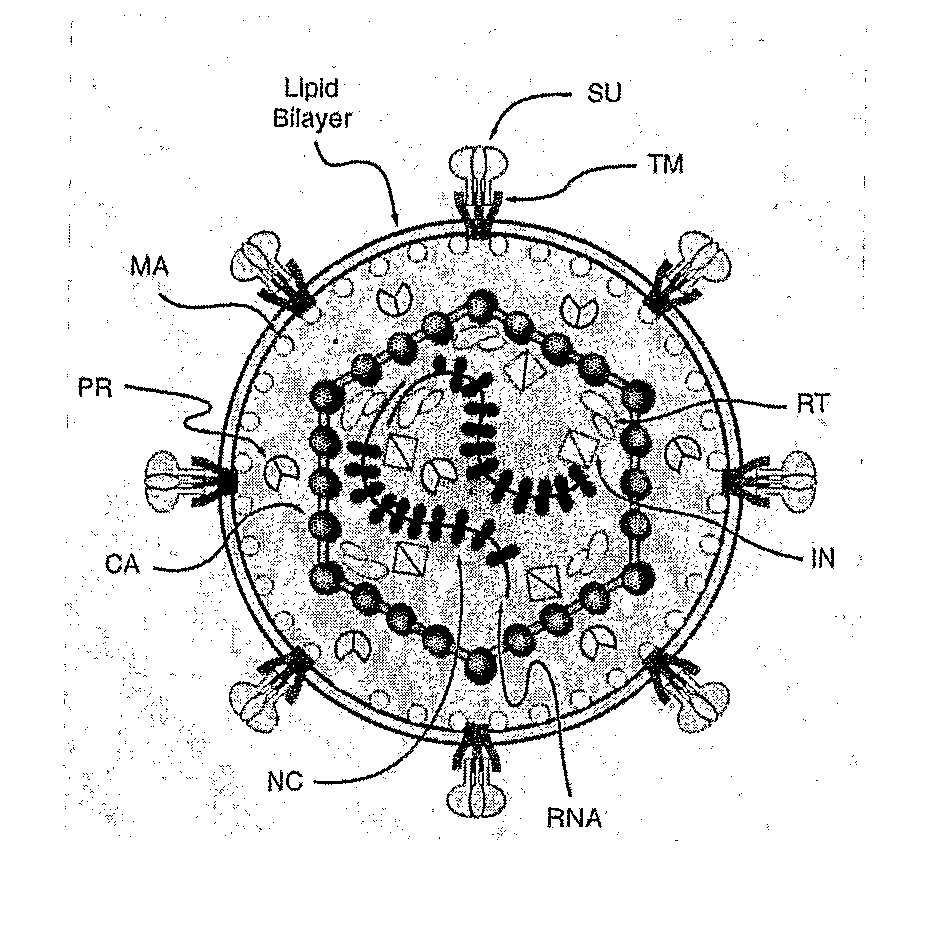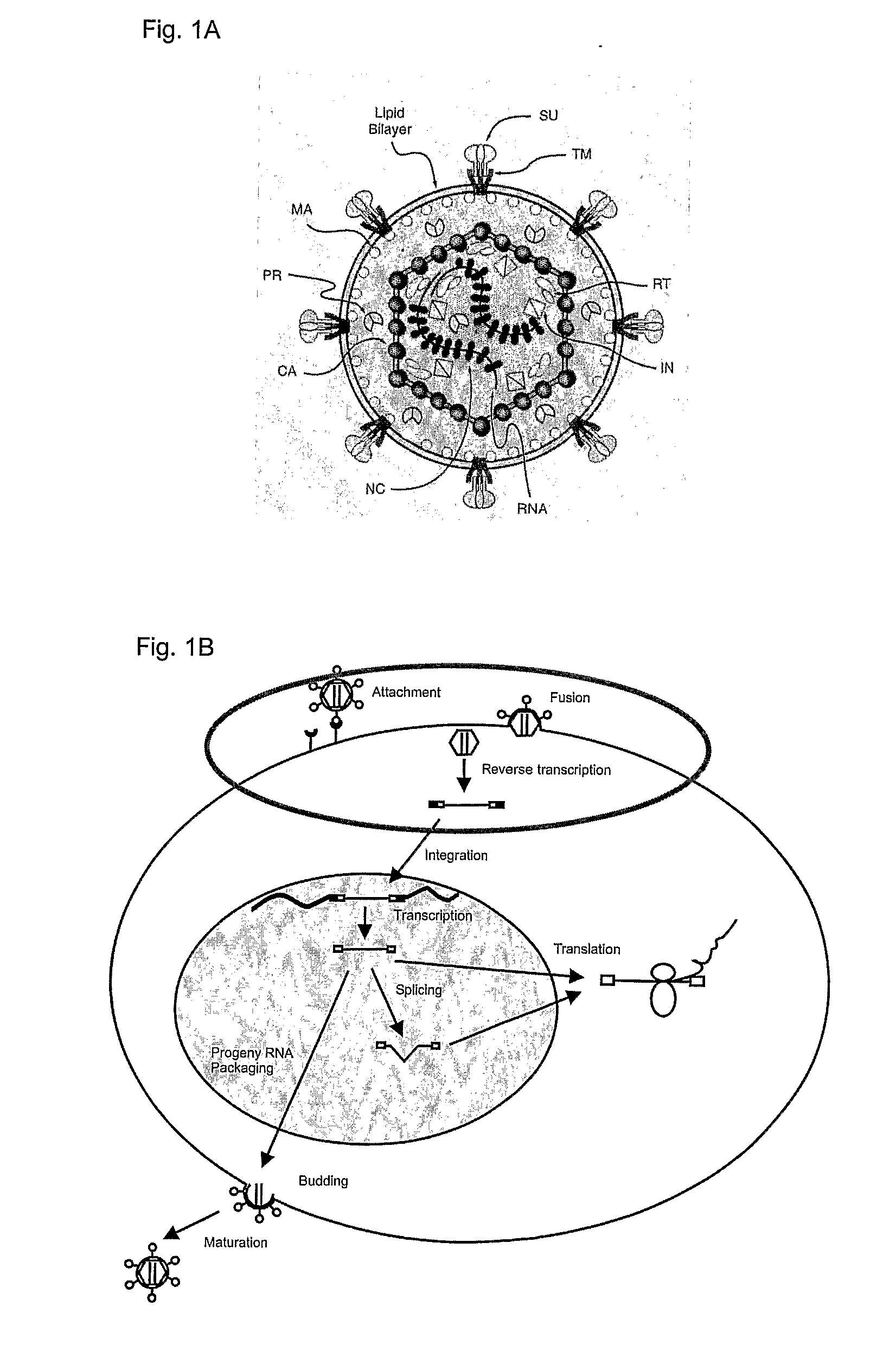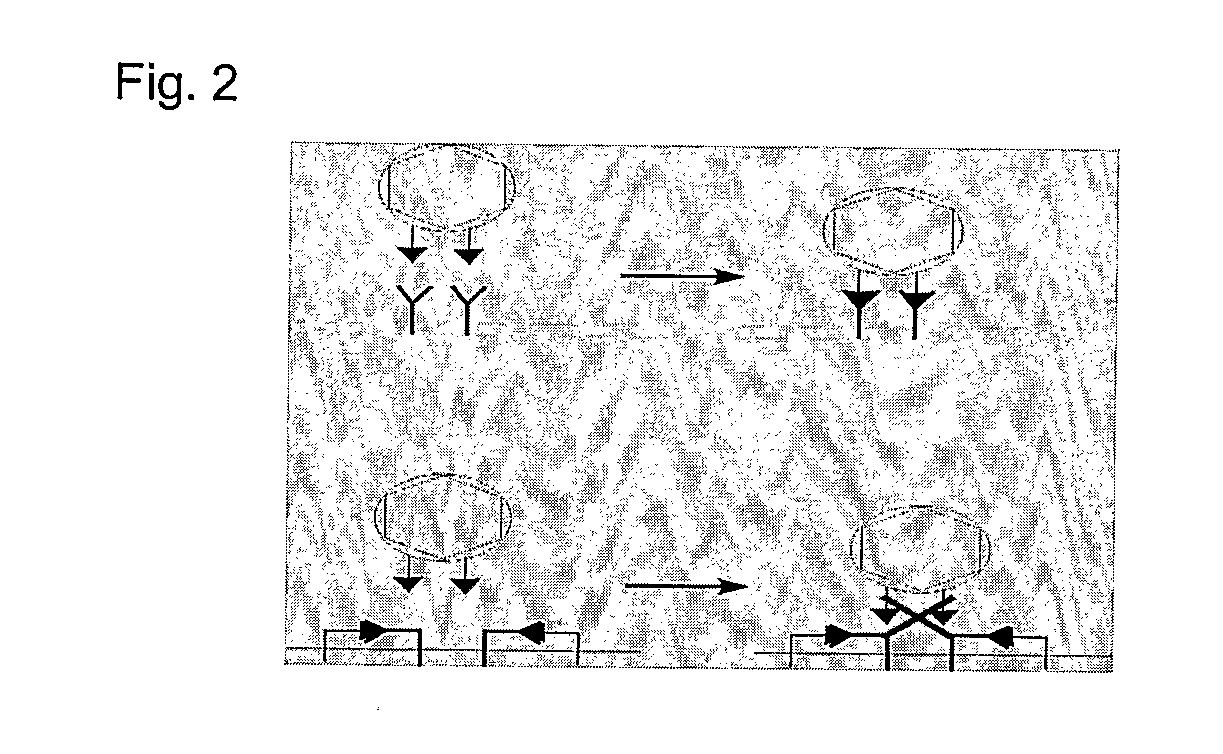Chimeric Viral Envelopes
a polypeptide and envelope technology, applied in the field of chimeric polytropic viral envelope polypeptides, can solve the problems of impaired in the ability to infect and replicate in mink cells or human cells, inability to further replicate, and difficulty in intelligent engineering of the envelope protein, so as to prevent or reduce hiv infection
- Summary
- Abstract
- Description
- Claims
- Application Information
AI Technical Summary
Benefits of technology
Problems solved by technology
Method used
Image
Examples
example 1
[0571]Sequence identity: The percent sequence identity between the protein sequences of gammaretroviruses when compared with the SL3-2 envelope protein sequence of gammaretroviruses was calculated using the VECTOR NTI computer program:
Percent sequencePercent sequenceidentity inidentity in RBD ofNameTropismenvelope proteinenvelope proteinFeLV-BPit-1 receptor60.252.3but from catsMoMLVEcotropic63.535.4MCF247Polytropic92.792.0NZB-9-1Xenotropic76.471.04070AAmphotropic87.684.7
[0572]Wherein RBD is the receptor binding domain. The RBD domain can be defined as the domain corresponding to the polypeptide domain that by itself is able to bind to the receptor. In the present invention the RBD of the envelope polypeptide is preferably defined as the region delineated by the first amino acid of the envelope polypeptide and the amino acid preceding the proline rich region (PPR).
[0573]The amino acid sequence of SL3-2 is identical to that of SEQ ID NO. 2.
[0574]The amino acid sequence of MCF247, NZB-...
example 2
Flow Cytometry to Detect CXCR4 CSE
[0575]Method: Flow cytometric analysis was carried out of Cell Surface Expression (CSE) of CXCR4 of cells transduced with vectors comprising the chimeric envelope polypeptide of the present invention. D17 CD4 CXCR4 cells were transduced with a vector expressing SL3-2 envelope with V3 loop inserted at positions indicated.
[0576]The transductions were done by co transfecting Moloney gagpol 2 ug, VSV-G expressing vector 2 ug and a mini-virus expressing the SL3-2 (V3 construct 6 ug) in 293T cells using calcium phosphate transfection protocol (see detailed protocol in Bahrami et al., “Mutational library analysis of selected amino acids in the receptor binding domain of envelope of Akv murine leukemia virus by conditionally replication competent bicistronic vectors”, Gene. 2003 Oct. 2; 315:51-61). The virus containing supernatant was subsequently used to transduce the D17 CXCR4 CD4 cells.
[0577]Six chimeric variants have been tested (sequences used shown in...
example 3a
Syncytia Assay
Protocol:
[0596]293T cells are cultured in DMEM media with 10% Foetal Bovine Serum and 1% penicillin / streptomycin.
[0597]D17 CD4 CXCR4 cells are cultured in α-MEM media with 10% Foetal Bovine Serum and 1% penicillin / streptomycin.[0598]Day 1: 293T cells are seeded at 1*104 cells / cm2 in 6-well plate (Nunc, Roskilde)[0599]Day 2: Fresh media is added to 293T three hours prior to transfection. 293T cells are transfected with an HIV-1 Envelope expressing constructs (see sequence information below) via CaPO4-precipitation method.[0600]Day 3: Media is replenished on 293T cells and D17 CD4 CXCR4 cells are co-cultured in the 6-well plate at a density of 2*104 cells / cm2.[0601]Day 4: Syncytia formation is determined visually and pictures are taken of the plaques formed. Nuclei are counted.
[0602]Results: The capability of performing cell-cell fusion mediated by the interaction of the HIV-1 envelope protein and the CD4 / CXCR4 receptors utilising 293T and D17 cells is seen. The egfp exp...
PUM
| Property | Measurement | Unit |
|---|---|---|
| Fraction | aaaaa | aaaaa |
| Fraction | aaaaa | aaaaa |
| Digital information | aaaaa | aaaaa |
Abstract
Description
Claims
Application Information
 Login to View More
Login to View More - R&D
- Intellectual Property
- Life Sciences
- Materials
- Tech Scout
- Unparalleled Data Quality
- Higher Quality Content
- 60% Fewer Hallucinations
Browse by: Latest US Patents, China's latest patents, Technical Efficacy Thesaurus, Application Domain, Technology Topic, Popular Technical Reports.
© 2025 PatSnap. All rights reserved.Legal|Privacy policy|Modern Slavery Act Transparency Statement|Sitemap|About US| Contact US: help@patsnap.com



